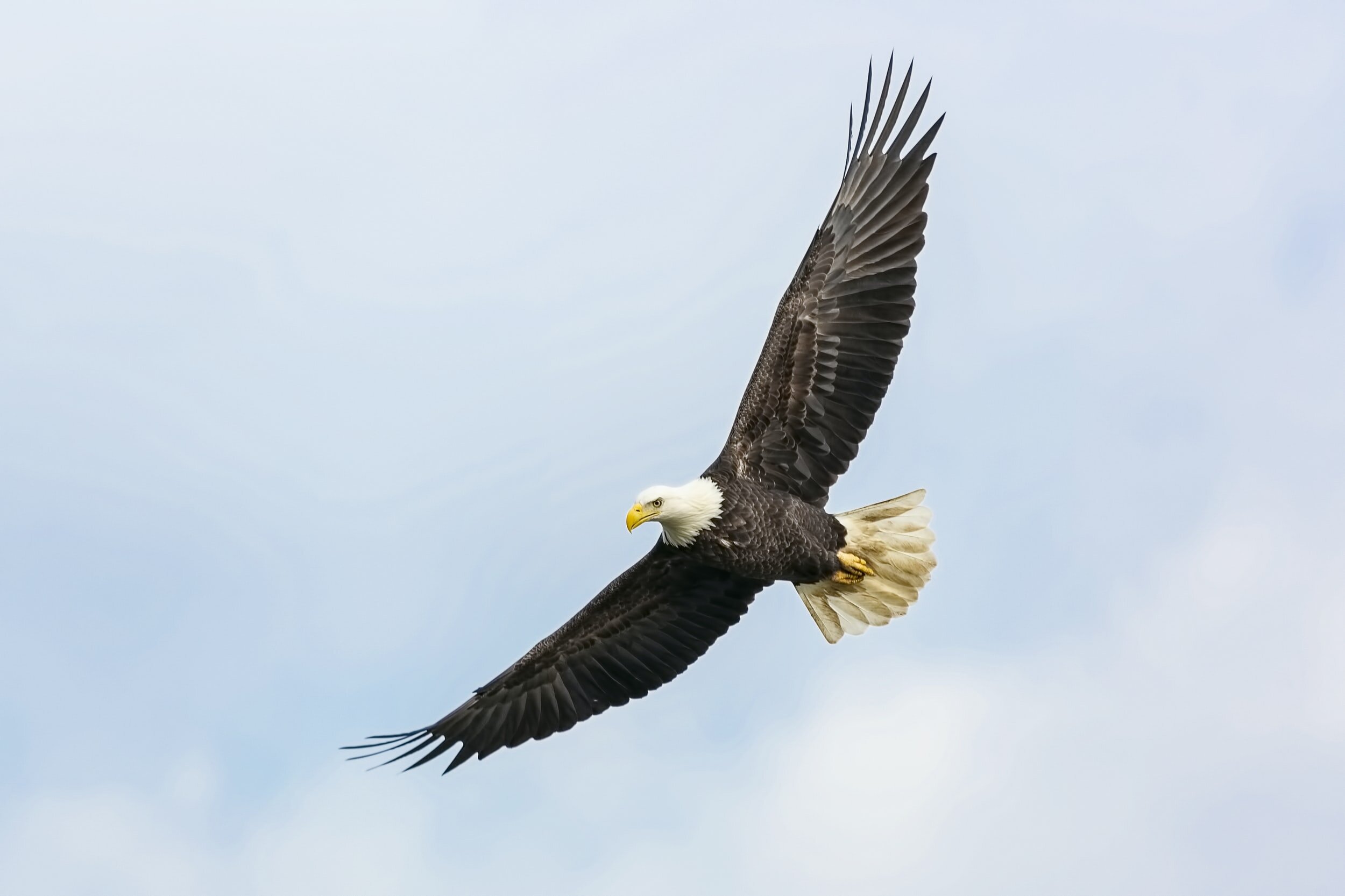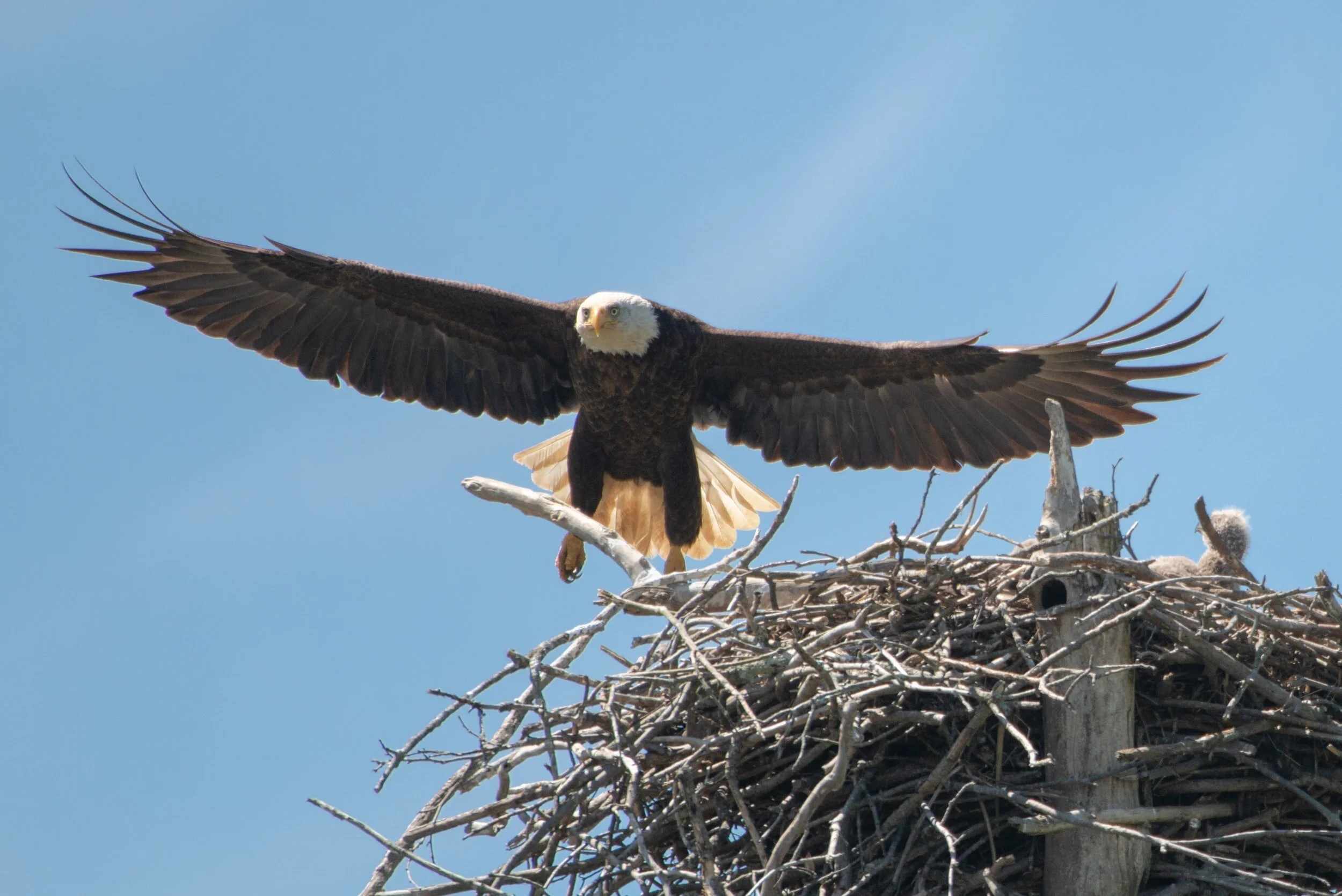A convocation of eagles
A convocation of eagles is not a feted occasion requiring black gowns and tasseled caps. Like a murder of crows or a gaggle of geese, a convocation is the unexpected collective noun for a group of eagles.
Eagles have inspired humans throughout history – and the world. The Ancient Romans used them as a symbol of Empire. Here in the United States, the Bald Eagle (Haliaeetus leucocephalus) is our national bird.
Native American tribes, including Hood Canal’s Skokomish, venerate the Bald Eagle. Many tribes associate the eagle with the creator. Since this bird is the strongest flyer, it is believed to carry prayers to the heavens. Feathers and other parts of the bird (such as the talons) are important to many Native American ceremonies, such as smudging, powwows, and talking circles.
At the turn of the 18th century, the Bald Eagle population was estimated to be between 300,000–500,000. In the early 20th century however, the eagle was targeted for sport and because of their perceived predation upon livestock. Between 1918 and 1930 one ornithologist estimated that approximately 70,000 bald eagles had been shot in the state of Alaska. Additionally, nesting sites were disturbed by logging and other forms of development.
The Bald Eagle Protection Act was introduced in 1940 to protect nests, eggs, feathers, and to stop the slaughter of Bald Eagles. By the 1950s, however, there were reported to be only 412 nesting pairs left in the 48 conterminous United States.
Pushed to near extinction
Further, pressure was placed upon Bald Eagles populations (and many birds of prey species) by the pesticide Dichlorodiphenyltrichloroethane (DDT). Since Bald Eagles are predators at the top of the food-chain, this chemical was concentrated in their prey and even the prey of their prey. This bioaccumulation disrupted the Bald Eagle’s metabolism of calcium, severely effecting fertility rates and inhibiting healthy egg production.
Bald Eagles were declared endangered in 1962.
Shari Sommerfeld Images
Revival of a species
However, this is actually a happy story. In 2007, the Bald Eagle was federally delisted from the endangered species list. With the banning of DDT in the United States in 1972 (1989 in Canada), extensive breeding programs, and the enforcement of the Bald and Golden Eagle Protection Act– the population soared. By 2005, in Washington State alone, it was estimated that there were over 840 breeding pairs. In 2009, the Bald Eagle population of the United States was estimated to be nearly 143,000 birds, this number is expected to stabilize at 228,000 birds in the next 5 to 15 years.
Speaking of resurgent populations, January to February is the mating season for Bald Eagles. Usually mating for life, male and females perform stunning aerobatic courtship displays with airborne talon clasping and free falls.
Along the Hood Canal, nests are in trees near water or open fields. Old cedar snags, giant spruces, or the larger coniferous trees are favorites. Both the male and female gather branches and twigs to weave into these monstrous nurseries.
Eagle nests, known as aeries or eyries, are one of the largest nests at nearly 5-6 feet in diameter and 2-4 feet in height.
The female will typically lay 1-3 eggs and both the male and female will take turns incubating the eggs for 34-36 days. After 10-12 weeks (approximately late summer), when the fledglings have left the nest, the mating pair and fledglings may travel to Northern British Columbia and Alaska to take advantage of the early salmon runs.
Shari Sommerfeld Images
To learn more about birding locations on Hood Canal, visit olympicbirdtrail.org for a list of 25 top locations around the peninsula.
A Few Eagle Facts
Bald Eagles are not actually bald, their name comes from an older term for “white- headed.”
At 80.3 inches, the Bald Eagle’s wingspan is slightly greater than a Great Blue Heron. Mature Bald Eagles can weigh between 105.8 to 222.2 oz, with the females usually weighing in on the larger end of the spectrum.
The Bald Eagle is the only eagle native to North America. There are other eagle species in North America, but they are found more globally too, whereas the Bald Eagle is specifically found in North America.
Bald Eagles have a long-life span. The oldest recorded bird in the wild was killed by a car in 2005 in New York, 38 years after being banded in the same state in 1977.
Bald Eagles have a soft, chirpy call, which runs counter to the image of a strong, powerful bird, so its call is often dubbed over in TV and movies with the call of a Red-Tailed Hawk.
Bald Eagles are capable swimmers, if their free-fall salmon dive results in a catch that is just a little too large for lift-off, they can swim ashore with their catch, using their massive wings as “oars.”
Don’t keep an illegal eagle! Possession of an eagle feather without a federally approved permit may be punishable by a $100,000 fine and/ or a year in jail. Permits are only granted to federally recognized Native American Tribal members.





